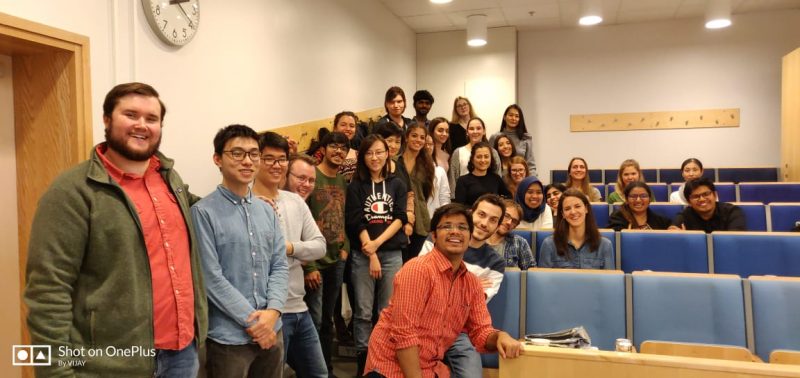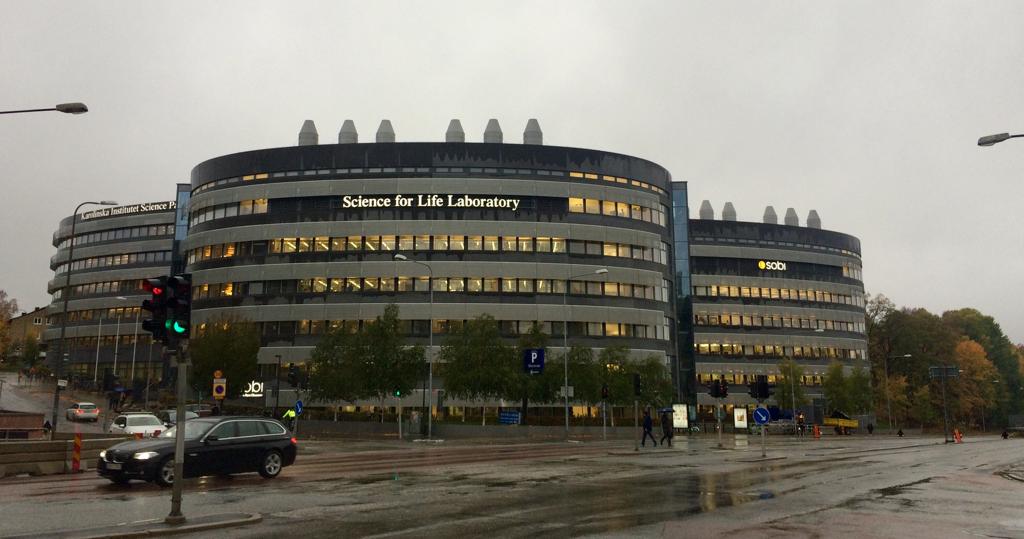
One master’s and three universities: All about the Master´s in Molecular Techniques in Life Science.
Hello everyone!
Application period has opened! For me, this time last year I was still deciding which Master would be best for me. The MTLS Joint Master Program specially caught my attention. The fact that it’s organized by three universities – and also has a research centre in close connection – makes it very exciting, but it also makes the information hunting a bit more demanding. In this post I will sum up what the MTLS Joint Master Program is all about, keep reading to discover it!
One master’s and three universities: it’s all about collaboration!

Beautiful Stockholm City Hall
One of the advantages of choosing a Joint Master Program is that each of the collaborating universities focuses on the topic(s) they are stronger at, and this is exactly what happens in MTLS. This program bridges the need of bioinformatic analysis in biomedical research and drug discovery by bringing together three great universities: Karolinska Institutet, Stockholm University and KTH Royal Institute of Technology. As a result, each university organizes a semester focused on a different topic, and the fourth and last semester of the master is a master thesis project.
Although some changes in the program may occur from year to year I’m going to sum up how the MTLS looks for my batch.
Semester 1: Karolinska Institutet
The MTLS program starts at Karolinska Institutet, which organizes the courses during the first semester. This semester is focused on biomedicine and human health, as they are KI’s specialities. My courses during this semester are:
- Genetics (5 ECTS).
- Applied Communication (7.5 ECTS)
- Frontiers in Translational Medicine (16.5 ECTS)
- Applied Programming for life sciences 1 (1.5 ECTS)
Semester 2: Stockholm University
The second semester takes place at Stockholm University and is more focused on bioinformatics, molecular biology, biophysics and biochemistry. My second semester will contain the following courses:
- Bioinformatics (7 ECTS).
- Structure and dynamics of biological membranes (7 ECTS)
- Methods in molecular life science (7 ECTS)
- Comparative genomics (7.5 ECTS)
- Applied programming for life sciences 2 (1.5 ECTS)
Semester 3: KTH Royal Institute of Technology
The third semester containing courses is organized by KTH, and contains courses related to gene technology amongst others. During this semester there are also some elective courses we can choose from:
- Applied gene technology and large-scale data analysis (7.5 ECTS)
- Clinical applications of biotechnology (6 ECTS)
- Applied programming for life sciences (1.5 ECTS)
- Elective courses (choose 2 out of 3):
- Systems biology (7.5 ECTS)
- Drug development (7.5 ECTS)
- Project in molecular life science (7.5 ECTS)
Semester 4: This is where SciLifeLab comes to place

The fourth and last semester of the master is entirely devoted to a master thesis (30 ECTS). This is a research project that can be done in either KI/Stockholm University/KTH or any other research center or university around the world. However, here in Stockholm is the Science for Life Laboratory (or SciLifeLab, as everyone calls it), a National Research Center in which KI, KTH, Stockholm University and Uppsala University collaborate. In SciLifeLab, apart from great research groups, there are state-of-the-art infrastructures and technologies very connected to the contents taught during MTLS: genomics, proteomics, single cell biology…
Quick reminder! Application is now open
Interested in applying for MTLS? Since this program is hosted by KTH all the information about the application procedure is in their webpage, go check it!
Good luck with the application! For any further questions about MTLS or application in general contact me at ines.rivero.garcia@stud.ki.se.
/Ines
Instagram: @inesriverog
LinkID: Ines Rivero Garcia

0 comments